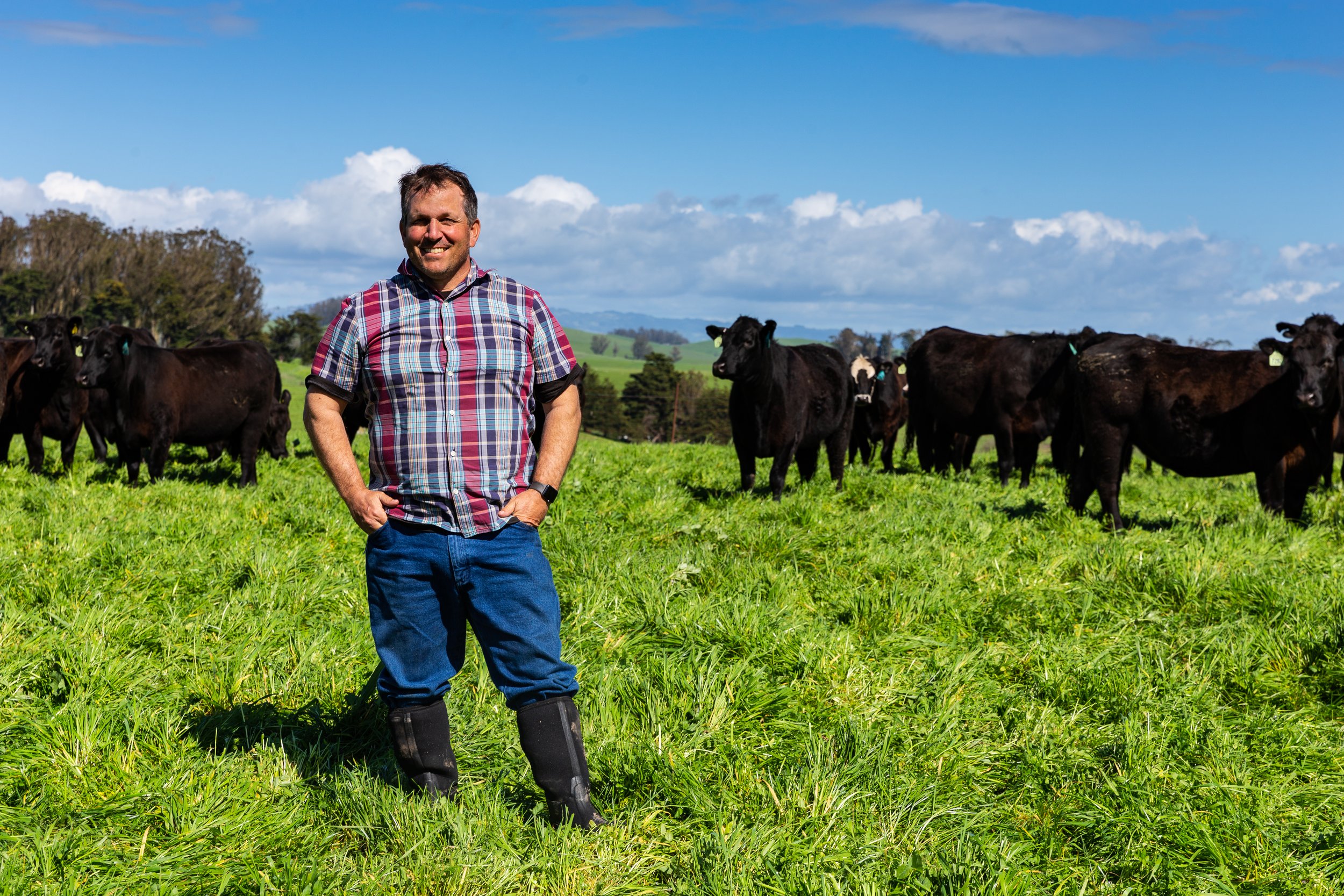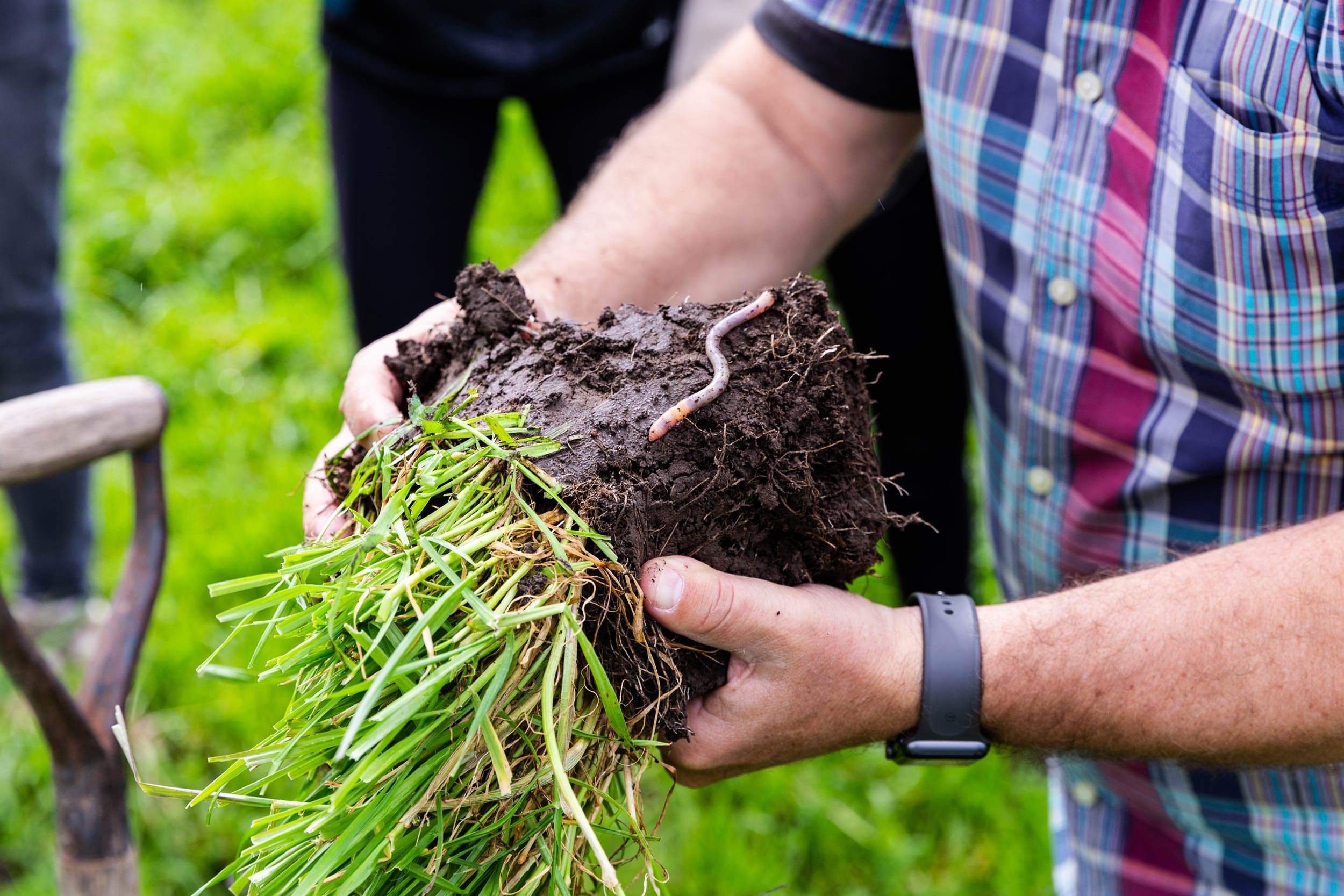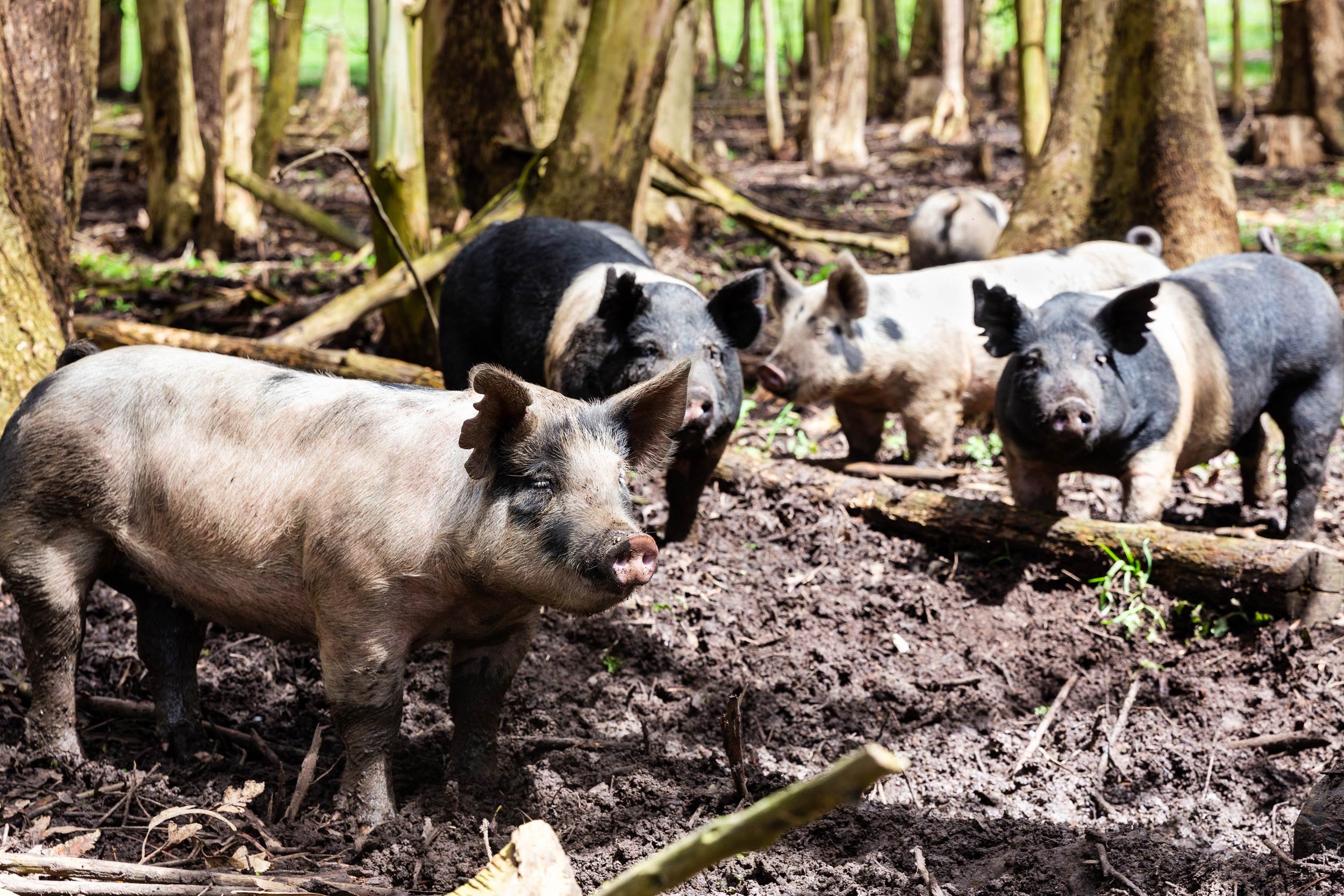At Stemple Creek Ranch, It’s All About the Soil
A fourth-generation farmer is raising premium grass-fed meat in sync with the environment.
The lush, green hills of Stemple Creek Ranch have been in Loren Poncia’s family for more than a century. He and his wife, Lisa, are the fourth generation to own what is now a thousand acres of grassy pasture a few miles from the Marin coast. Loren has taken a new approach to stewarding the land — originally a dairy started by his great grandfather who emigrated from Italy — focusing on grass-fed (and finished) cattle and sheep, and most recently, humanely raised Berkshire pigs.
There’s no sidestepping the fact that agriculture emits greenhouse gases that warm the planet and intensify climate change. In America, the industry is responsible for 9 percent of emissions, with conventional beef producers among the worst offenders. But Stemple Creek Ranch is anything but conventional. Instead of exploiting the environment by raising cattle as quickly and cheaply as possible, Loren works in sync with nature to regenerate his land and pull carbon from the atmosphere — all while producing tender, flavorful cuts of meat that have caught the attention of chefs at restaurants like Chez Panisse.
How does he do it? It all starts with the soil.
Better Meat from the Ground Up
Loren considers himself, first and foremost, a soil farmer. Rich, healthy, biodiverse soil retains more nutrients and water, which helps him grow better grass for his animals, resulting in tastier, healthier meat. But it’s not as easy as it sounds. The beef and lamb raised at Stemple Creek Ranch are all-natural, organic, free-range, grass-fed and grass-finished. That means Loren doesn’t use chemical pesticides or fertilizers and he doesn’t feed his animals corn or grain (with the exception of his pigs), or pump them full of antibiotics.
“The biggest challenge is figuring out how to solve problems or get results without conventional tools,” Loren said.
He has plenty of all-natural tricks up his sleeve, though. For starters, he plants perennial grasses — like ryegrass, clover, and brassica — throughout his pasture. In addition to making his land more biodiverse, these perennials have deep roots that keep the soil intact while pulling nutrients into the ground through photosynthesis, further enriching the soil. His cattle and sheep love them, too.
“The pastures are like salad bars,” Loren said. “The animals eat the good stuff and leave the other stuff behind.”
Since he doesn’t rely on chemical fertilizers, Loren spreads compost — a mix of organic waste that’s been broken down by microorganisms. Loren makes his own compost from raw materials like woodchips, chicken poop, kelp, and green waste. Applying compost — which is rich in carbon, nitrogen, and other nutrients — stimulates grass growth much like fertilizer would. It also helps his land retain more water while drawing carbon from the atmosphere into the soil (more on that later).
“Carbon is like a sponge — when it touches water, it absorbs and stores it,” Loren said. “We want our pastures to be like huge sponges. For every 1 percent increase in carbon we have in our soil, we can store up to 20,000 more gallons of water per acre.”
Compost is the organic farmer’s saving grace, but Loren has some secrets, too. He sprays his fields with a small amount of seawater and a liquid mixture of ground-up salmon, crab, and shrimp — something few other ranchers are doing.
“It’s the stinkiest thing you’ve ever smelled,” he said, but along with the seawater, it stimulates the growth of fungi and other microorganisms. The result is increased biodiversity, which makes the soil healthier and more resilient, leading to hardier more nutritious grass that grows faster and lasts longer into the dry summer months.
Tackling Climate Change with Carbon Farming
The things Loren is doing at Stemple Creek Ranch — like planting perennial grasses and spreading compost — are part of a comprehensive carbon farming plan in partnership with the Marin Carbon Project. Loren and other carbon farmers use plants and grasses to pull carbon from the atmosphere into the soil via photosynthesis — a process known as sequestration. The goal is to employ agricultural practices that absorb more carbon than they emit, helping to offset the greenhouse gas emissions responsible for climate change.
It’s not all up to Loren, though — he gets plenty of help from his animals. Cattle spend only five to eight days grazing a parcel of land before the crew wrangles and moves them to fresh pasture. This practice, called rotational grazing, gives the soil and grass a chance to recover. The cattle, meanwhile, fertilize pasture after pasture with their waste, and because they’re constantly moving, they leave behind soil that’s loose and aerated. If they remained in one field, the grass would soon be grazed down to the roots, and the soil would be trampled and compacted. Land in that condition isn’t productive — it can’t absorb a lot of carbon, hold much water, or feed animals for very long.
The whole operation is a cyclical process that Loren carefully manages. Compost is the catalyst — it loads the soil with carbon and other nutrients, stimulating microbiology, increasing water retention, and spurring grass growth. The animals forage on the grass, fertilizing the land as they move. The abundance of healthy grass photosynthesizes even more carbon from the atmosphere, pulling it into nutrient-rich soil capable of storing it. Eventually, less compost is needed and the system sustains itself, drawing carbon from the atmosphere while producing luscious forage that feeds Loren’s cattle and sheep.
It all comes back to the soil. Without enough carbon, nutrients, and biological organisms in the ground, everything starts to fall apart.
The Result? Healthier, Tastier Food for Your Family
All this is great for Loren, his animals, and the environment. But what about the meat that ends up on your plate? It’s healthier, leaner, and intensely flavored — an entirely different product compared to the conventionally raised beef or lamb you’ll find in most grocery stores.
Because Loren’s cattle eat only grass, their meat has more nutrients, antioxidants, vitamins, and omega-3 fatty acids than standard beef, which comes from cattle that are often fed genetically modified corn or grains. And while grass-fed beef tends to be leaner, that doesn’t mean it’s less tasty. Loren takes pride in the marbling on his cuts of beef — stripes and layers of fat that melt when the meat is cooked, infusing it with flavor.
“Sometimes cattle are big and beautiful and fat when they’re 15 months old, but they’re probably not marbled and what I want on the plate,” Loren, who waits between 22 and 30 months to harvest his cattle, said. “I want marbled, grass-fed beef that looks like it’s grain-fed.”
But don’t take our word for it. All the restaurants, butchers, and meat-eaters eager to get their hands on Stemple Creek’s beef, lamb, and pork are creating new challenges for Loren.
“We can’t raise enough product to fulfill demand, so we’re starting to partner with other local ranchers,” he said. Stemple Creek leases pasture in places like Point Reyes and Humboldt County rather than overcrowding their property with animals, which would degrade the soil. This ensures that all their animals have enough grass to eat year-round so the high quality of their meat remains consistent.
More than 60 cuts of meat can come from a single cow, so we had to ask Loren about his favorite cut of Stemple Creek’s famous grass-fed beef and how to prepare it.
“Coulotte, medium rare, slice it against the grain,” he said. “I just love the fat cap and velvety texture. Season it with some salt, pepper, and garlic and cook it on a hot barbeque or cast-iron pan until all sides are seared and golden brown, but the internal temp is still less than 125 degrees.”









